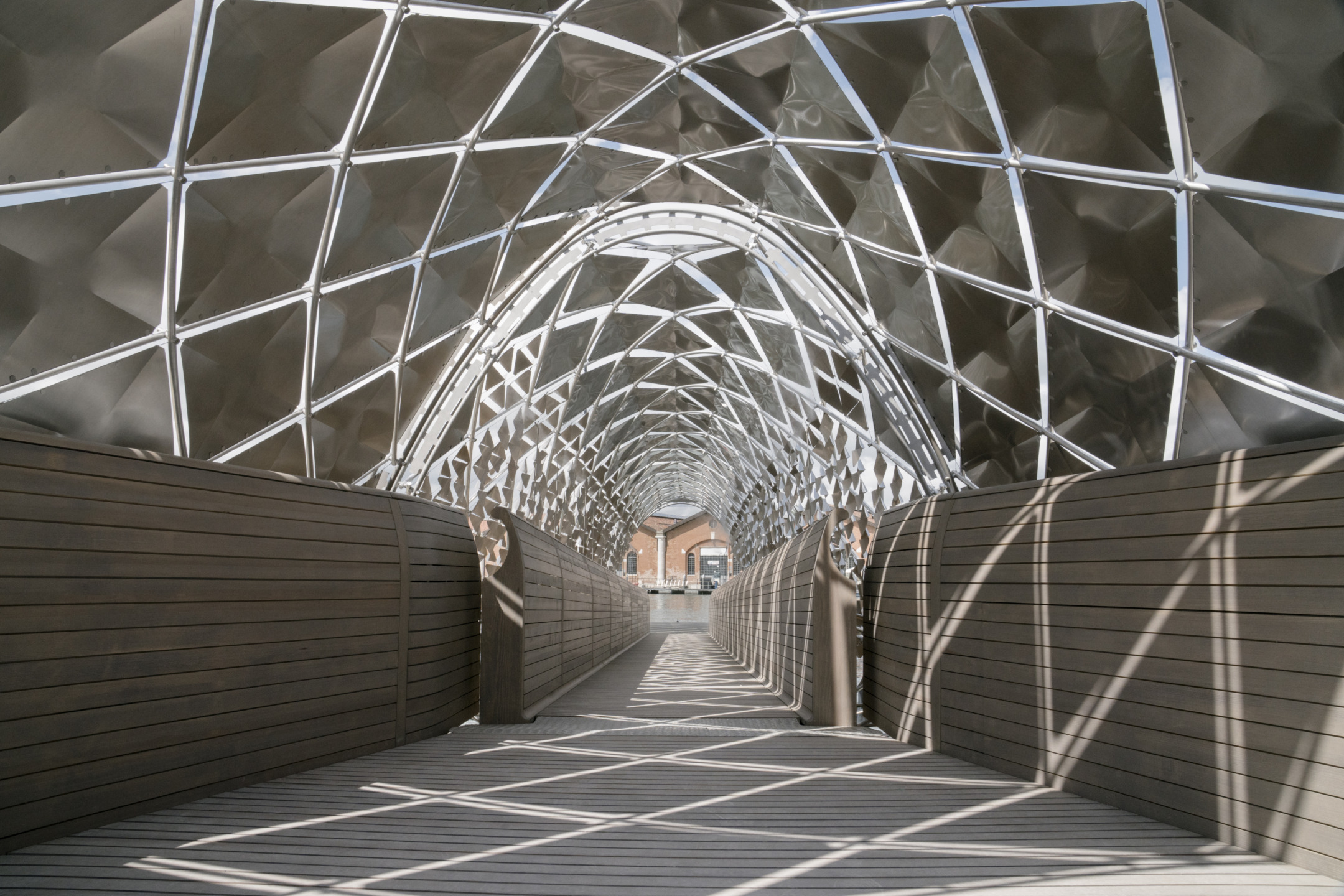Porsche and Norman Foster Rethink Venice Transit at the Biennale
A innovative installation forecasts a sustainable—and joyful—mobility future for the fragile city.

When Porsche invited the renowned architect Norman Foster and his namesake foundation to ponder the shape of the future and the collaboration between automobiles and architecture in response to its The Art of Dreams initiative, dream he did with an unwavering commitment to sustainability, innovation, and joy. Gateway to Venice’s Waterway, unveiled at the opening of the Biennale Architettura 2025, is an innovative transportation hub addressing the future of mobility in Venice and beyond.
The result of this year’s creative encounter is a waterfront structure that responds to the current transportation challenges facing La Serenissima while evoking its historic network of bridges. The hub acts as a gateway to e-mobility by creating a connection to new electric means of transportation on both land and water, including water bikes (Schiller bikes) and electric sports boats (Frauscher x Porsche 850 Fantom Air) with the all-electric drive of the Porsche Macan Turbo. During the biennale’s opening week, the vehicles were used as emission-free methods of transit.

“We took the project of Waterways literally,” explains Foster, a Galerie Creative Mind. “In this project, dreaming meant imagining a Venice where historic preservation and advanced mobility coexist. We have created a blueprint for urban innovation that respects the past while embracing the future.”


The Art of Dreams program invites artists, architects, and designers to collaborate with Porsche to think ahead and outside any box. At last year’s Milan Design Week, for example, Numen/For Use riffed on the German automaker’s Pepita pattern, a classic houndstooth textile introduced in the 1960s that has since become one of its most iconic fabrics. The artist collective devised a netted installation that resembles the pattern’s crisscrossing shapes, translating two-dimensional forms into three-dimensional environments. “We are building cars for people’s dreams,” says Michael Mauer, VP Style at Porsche. “We are sharing our dreams and the dreams of the artists with the world. The big challenge is how to make their visions work.”
Combining the advanced technology and know-how of Porsche with Foster’s architectural genius starts with a clean sheet of paper, a blank computer screen. He explains how the opportunity to participate in the Biennale was an invitation to explore, experiment, and innovate. “This was to create something that would respond to nature—to the light, to the wind—and float,” he says, referring to the water bikes tethered to the 121-foot waterway. Each are perched underneath a waterfront canopy whose solid aluminum structure nods to the lightweight construction concept of the legendary 908 race car.

Time was Foster’s primary challenge. “To develop an idea with humble materials, to create something highly sophisticated that responds to nature, to be able to pioneer in a very short time frame is challenging. You’re doing a number of things which have not been done before and they have to stand the test of real life use.” With the support and patronage of Porsche, the challenge was met. Gateway to Venice’s Waterway is a tribute to the art of collaboration and leaning into the connection between architecture, design and the automobile.
On view until November 2025 at the Arsenale in Venice.

